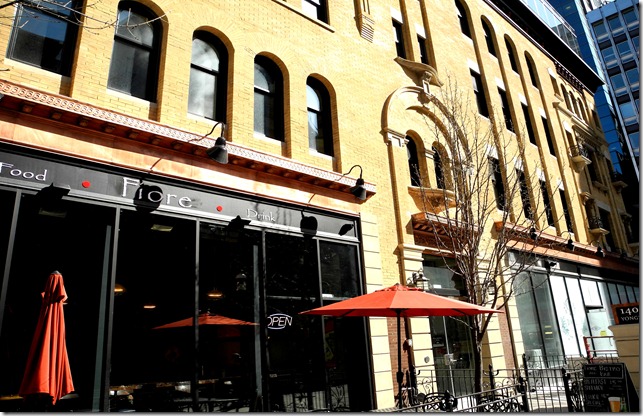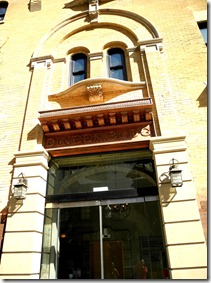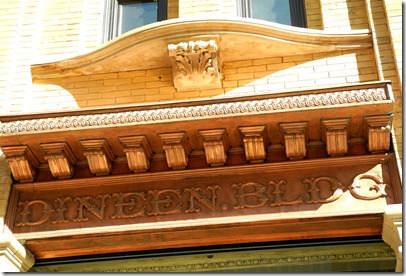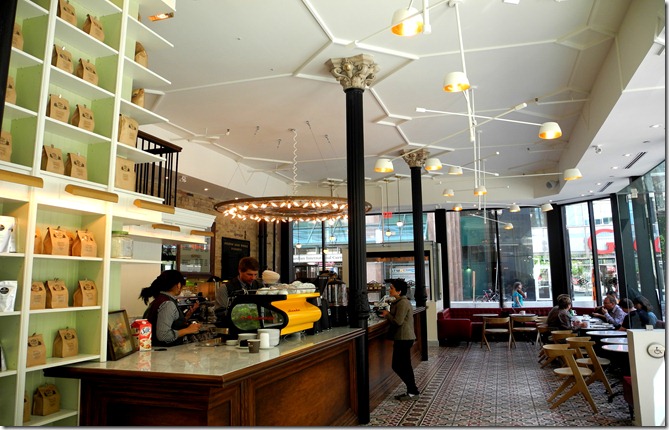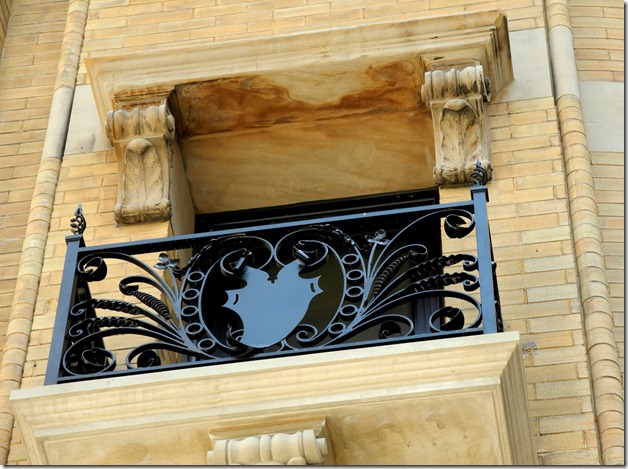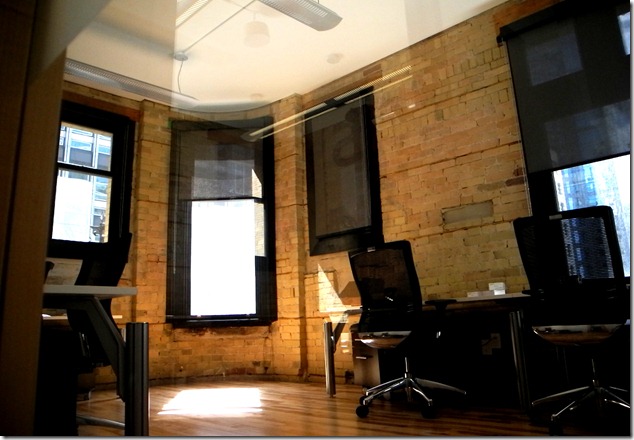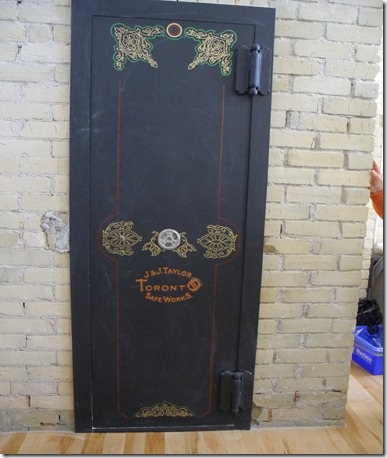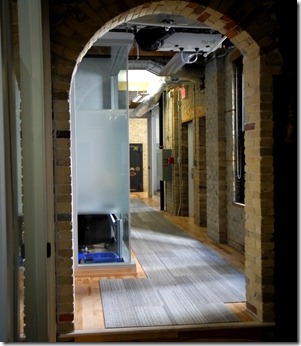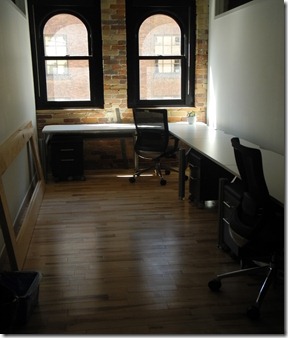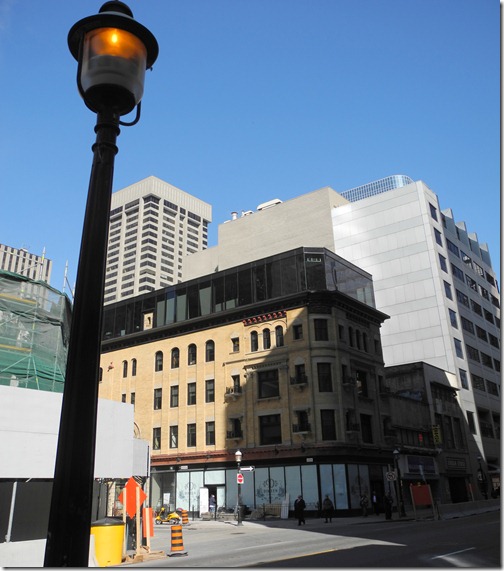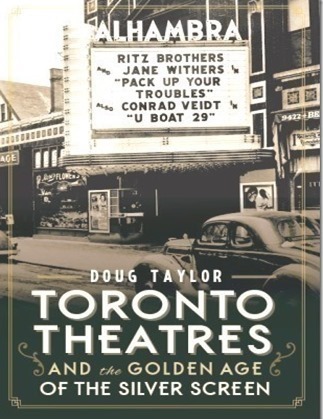The Dineen Building at 140 Yonge Street, on the northwest corner of Yonge and Temperance Street has recently been restored to its former glory. In the 19th century, the site was occupied by the “Dineen Hat and Fur Company,” which relocated to these premises in 1897. The cost of the new premises was $30,000. They maintained their showroom on the first floor, facing Yonge Street, and on the upper floors they manufactured hats and fur coats. Large security safes were installed to store the valuable furs. When the building was recently restored, many of the safes were discovered, covered by drywall.
The Dineen Hat and Fur Company rented out any space in the building that was in excess of their needs. Thus, the building was also an income property. When it opened in 1897, it was in the heart of the retail district of Toronto, which centred around Queen and Yonge Streets, where Eaton’s and Simpson’s department stores were located. At the time, it was one of the most attractive buildings in the downtown area. Having now been restored, it is again a very handsome structure.
An ad in the Toronto Telegram newspaper of 1897 advertising a special sale.
This photo of Yonge Street shows the Dineen Building on the left. The view is looking north on Yonge toward Queen Street, c.1910. The large Romanesque-style building on the right, with the pointed roof, is the Confederation Life Building. This photo is likely from the City of Toronto Archives, but was located on the Wikipedia site.
The south facade of the Dineen Building, facing Temperance Street. The entrance to the building is particularly impressive, with its Roman archway. The windows are also topped with Roman arches.
The entrance to the building on the south side. The recent restoration has meticulously restored the building’s architectural detailing.
The coffee shop on the ground floor was once the showroom of the Dineen Hat and Fur Company.
Juliet balconies on the Dineen Building that have been restored.
An office on the third floor, contained within the rounded brick facade that curves around the corner of Yonge and Temperance Streets. Today, in the Dineen building, it is possible to rent space on a daily basis or for any number of hours a client prefers. This is referred to as “hot-desking.” Is an ideal concept for companies or individuals that require office space within the downtown area for a limited period. The company provides internet and other services that their clients might require. There is also a lounge area in the basement that is suitable for conferences and meetings.
One of the lager safes that was discovered behind the drywall in the building. It is over 100 years old, so cannot be opened until supervised by the proper historic authorities as it is an artefact. It has remained unopened for 90 years.
Interior space in the Dineen building. The heritage property has a warm and inviting atmosphere. These photos were taken on a Saturday during “Doors Open Toronto,”when the office space was in darkness except for the light from the windows.
The restored Dineen Building is a welcomed addition to the downtown scene, its warm yellow bricks contrasting with the glass and steel towers surrounding it.
To view the Home Page for this blog: https://tayloronhistory.com/
Links to other posts about the history of Toronto and its buildings:
https://tayloronhistory.com/2013/10/08/links-to-historic-architecture-of-torontotayloronhistory-com/
Links to posts about Toronto’s movie houses—past and present.
https://tayloronhistory.com/2013/10/09/links-to-toronto-old-movie-housestayloronhistory-com/
Recent publication entitled “Toronto’s Theatres and the Golden Age of the Silver Screen,” by the author of this blog. The publication explores 50 of Toronto’s old theatres and contains over 80 archival photographs of the facades, marquees and interiors of the theatres. It also relates anecdotes and stories from those who experienced these grand old movie houses.
To place an order for this book:
Theatres Included in the Book
Chapter One – The Early Years—Nickelodeons and the First Theatres in Toronto
Theatorium (Red Mill) Theatre—Toronto’s First Movie Experience and First Permanent Movie Theatre, Auditorium (Avenue, PIckford), Colonial Theatre (the Bay), thePhotodome, Revue Theatre, Picture Palace (Royal George), Big Nickel (National, Rio), Madison Theatre (Midtown, Capri, Eden, Bloor Cinema, Bloor Street Hot Docs), Theatre Without a Name (Pastime, Prince Edward, Fox)
Chapter Two – The Great Movie Palaces – The End of the Nickelodeons
Loew’s Yonge Street (Elgin/Winter Garden), Shea’s Hippodrome, The Allen (Tivoli), Pantages (Imperial, Imperial Six, Ed Mirvish), Loew’s Uptown
Chapter Three – Smaller Theatres in the pre-1920s and 1920s
Oakwood, Broadway, Carlton on Parliament Street, Victory on Yonge Street (Embassy, Astor, Showcase, Federal, New Yorker, Panasonic), Allan’s Danforth (Century, Titania, Music Hall), Parkdale, Alhambra (Baronet, Eve), St. Clair, Standard (Strand, Victory, Golden Harvest), Palace, Bedford (Park), Hudson (Mount Pleasant), Belsize (Crest, Regent), Runnymede
Chapter Four – Theatres During the 1930s, the Great Depression
Grant ,Hollywood, Oriole (Cinema, International Cinema), Eglinton, Casino, Radio City, Paramount, Scarboro, Paradise (Eve’s Paradise), State (Bloordale), Colony, Bellevue (Lux, Elektra, Lido), Kingsway, Pylon (Royal, Golden Princess), Metro
Chapter Five – Theatres in the 1940s – The Second World War and the Post-War Years
University, Odeon Fairlawn, Vaughan, Odeon Danforth, Glendale, Odeon Hyland, Nortown, Willow, Downtown, Odeon Carlton, Donlands, Biltmore, Odeon Humber, Town Cinema
Chapter Six – The 1950s Theatres
Savoy (Coronet), Westwood
Chapter Seven – Cineplex and Multi-screen Complexes
Cineplex Eaton Centre, Cineplex Odeon Varsity, Scotiabank Cineplex, Dundas Square Cineplex, The Bell Lightbox (TIFF)
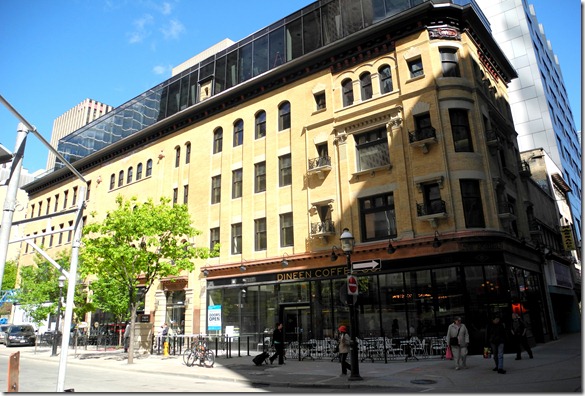
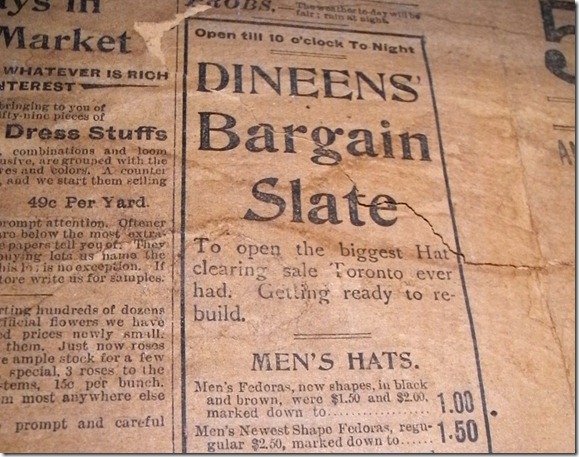
![dineen-3[1] dineen-3[1]](https://tayloronhistory.com/wp-content/uploads/2013/05/dineen-31_thumb.jpg)
